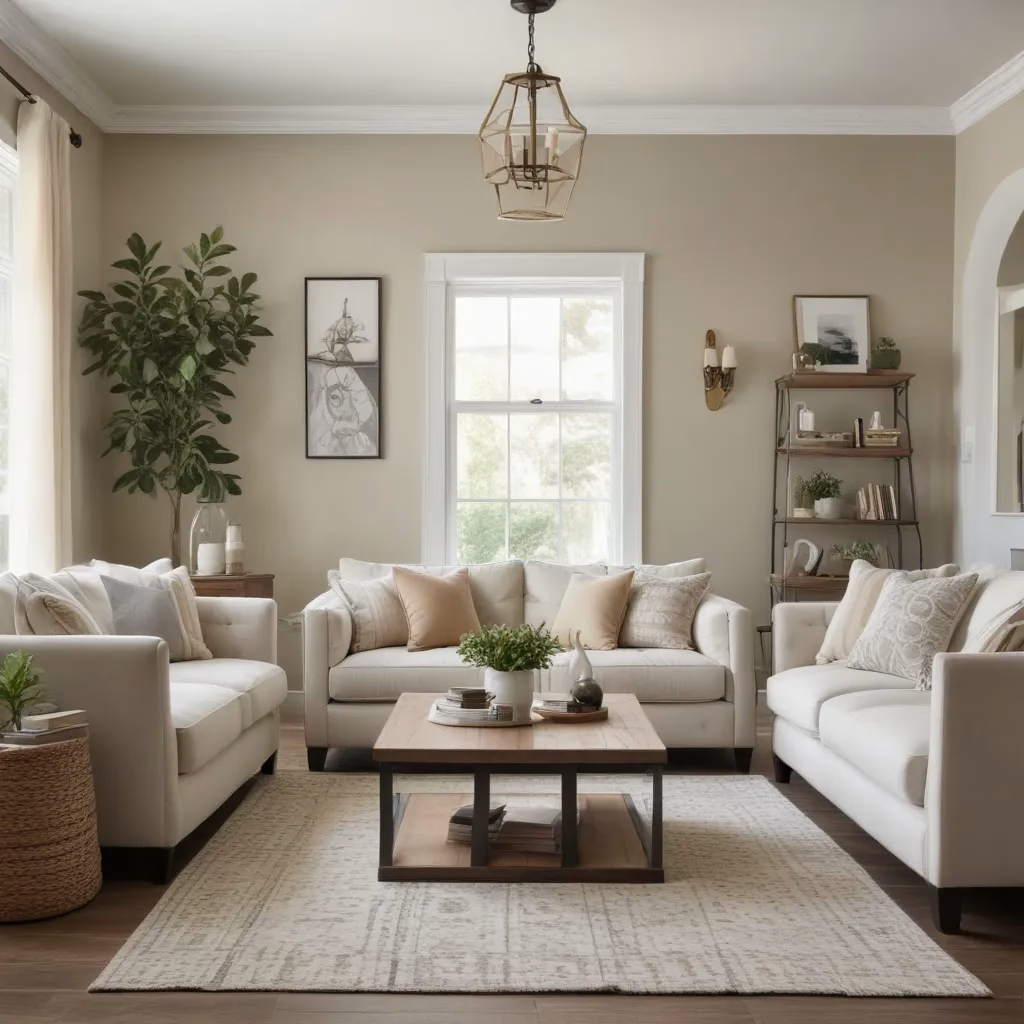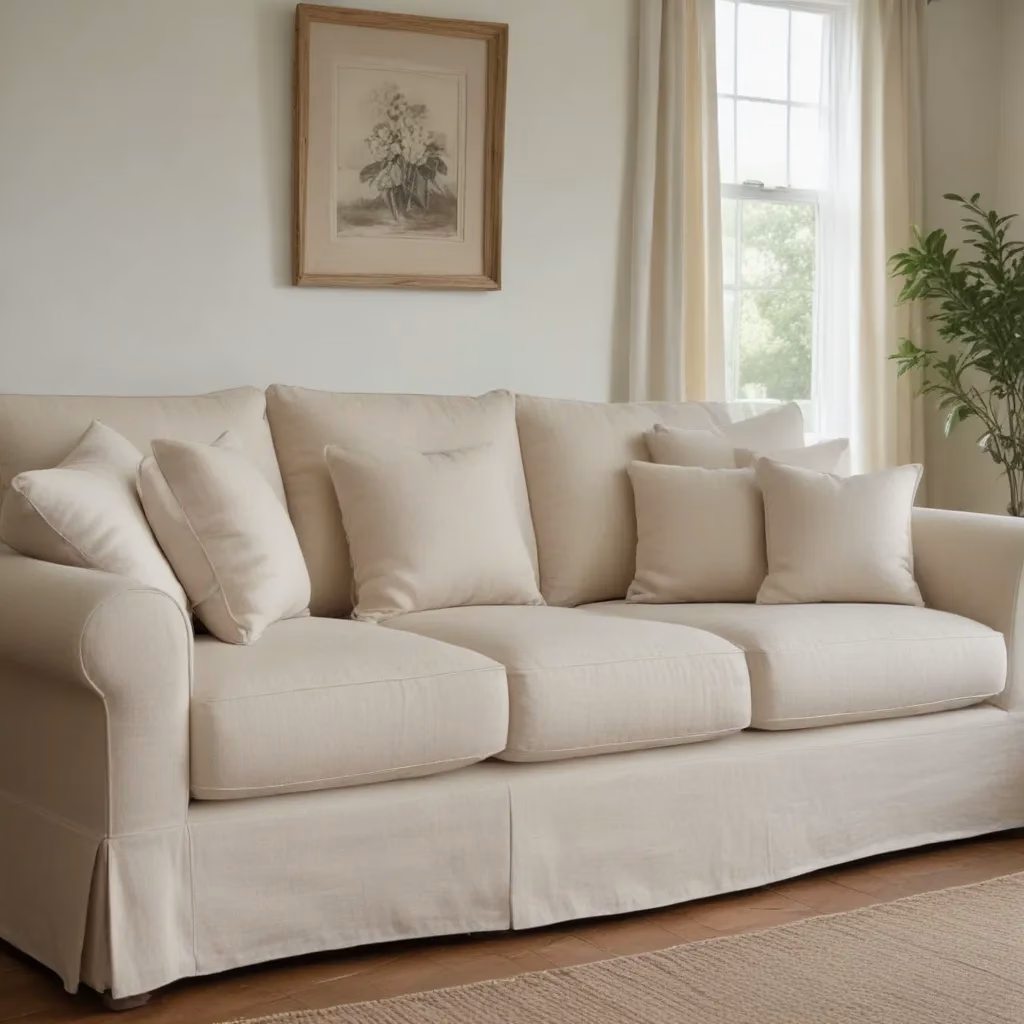
The Art of Selecting a Long-Lasting Sofa
As a furniture specialist with years of experience, I’ve seen countless sofas come and go. Some have stood the test of time, while others have fallen apart after just a few years of use. What sets apart a truly long-lasting sofa from the rest? It’s a combination of quality materials, expert craftsmanship, and thoughtful design.
When you’re in the market for a new sofa, it’s tempting to go for the cheapest option or the trendiest style. However, investing in a high-quality sofa can save you money and hassle in the long run. A well-made sofa can last for decades, becoming a cherished piece of furniture that sees your family through many life stages.
One of the first things I look for in a durable sofa is the frame. Solid hardwood frames, such as those made from oak, maple, or beech, provide a sturdy foundation that can withstand years of use. Avoid sofas with frames made from particleboard or cheap softwoods, as these can warp or break under pressure. A good way to test the frame’s strength is to lift one corner of the sofa – if it feels wobbly or creaks, it’s likely not built to last.
Upholstery Choices for Longevity and Style
The upholstery of your sofa plays a crucial role in both its appearance and durability. As someone who’s worked with various fabrics over the years, I can tell you that not all materials are created equal when it comes to withstanding daily wear and tear.
For families with children or pets, I often recommend performance fabrics. These innovative textiles are designed to resist stains, fading, and wear. They’re easy to clean and maintain, making them ideal for high-traffic areas. Microfiber is another excellent option for durability, as it’s resistant to pilling and can be easily spot-cleaned.
If you prefer a more traditional look, leather is a classic choice that ages beautifully. Full-grain leather, in particular, develops a rich patina over time and can last for decades with proper care. However, it’s important to note that leather requires regular maintenance to prevent cracking and fading.
For those who like to change their decor frequently, consider a sofa with removable slipcovers. This option allows you to update your look without replacing the entire piece of furniture. Plus, slipcovers can be easily washed, extending the life of your sofa.
The Importance of Proper Construction Techniques
Having seen the insides of countless sofas throughout my career, I can attest to the importance of proper construction techniques. A well-built sofa is like a finely tuned machine – every component works together to create a comfortable and long-lasting piece of furniture.
One key element to look for is eight-way hand-tied springs. This traditional technique involves tying each spring to the adjacent springs in eight directions, creating a supportive and flexible seat that maintains its shape over time. While this method is more labor-intensive and expensive, it results in a sofa that will provide consistent comfort for years to come.
Another important factor is the cushion filling. High-density foam wrapped in down or a down alternative offers a good balance of comfort and durability. Avoid sofas with low-density foam, as these will quickly lose their shape and support. Some high-end sofas use a combination of materials, such as a foam core wrapped in feathers, to provide both structure and softness.
Pay attention to the joinery as well. Reinforced corner blocks, dowels, and screws create stronger connections than staples or glue alone. When examining a sofa, don’t be afraid to lift the skirt and take a look underneath – quality construction should be evident in every aspect of the piece.
Designing for Timelessness
While it’s fun to follow trends, a truly long-lasting sofa should have a timeless design that won’t look dated in a few years. As someone who’s seen furniture styles come and go, I always advise clients to choose classic silhouettes and neutral colors for their main pieces.
A well-proportioned sofa with clean lines can easily adapt to changing decor styles. Look for pieces with subtle details that add interest without being overly trendy. For example, a tufted back or nailhead trim can add sophistication without dating the piece.
Color is another important consideration. While that bright orange sofa might seem like a fun choice now, you may tire of it quickly. Instead, opt for neutral shades like grey, beige, or navy. These colors provide a versatile backdrop that can be easily updated with throw pillows and accessories.
Remember, a high-quality sofa is an investment. Choose a style that you’ll love for years to come, rather than something that’s currently in vogue. Your future self will thank you for making a thoughtful decision that stands the test of time.
Maintenance Tips for Long-Lasting Sofas
Even the highest quality sofa requires proper care to stay in top condition. Over the years, I’ve developed a set of maintenance tips that can help extend the life of any sofa.
Regular vacuuming is essential to prevent dirt and debris from becoming embedded in the fabric. Use the upholstery attachment and go over the entire sofa, including the crevices and under the cushions. For leather sofas, dust with a soft, dry cloth instead.
Rotate the cushions regularly to ensure even wear. This is especially important for sofas with removable cushions. Flipping and rotating them every few weeks can prevent one area from becoming more worn than others.
Address spills immediately to prevent staining. Blot (don’t rub) the spill with a clean, white cloth to absorb as much liquid as possible. For more stubborn stains, consult the manufacturer’s cleaning instructions or seek professional help.
Protect your sofa from direct sunlight, which can cause fading and deterioration of the fabric or leather. Use window treatments or position the sofa away from windows to minimize sun exposure.
Consider using arm covers or throws on high-use areas to protect the upholstery from everyday wear. These can be easily washed or replaced, extending the life of your sofa.
The Role of Customization in Creating the Perfect Sofa
One of the advantages of investing in a high-quality sofa is the ability to customize it to your specific needs and preferences. Many furniture makers offer customization options that allow you to create a piece that’s truly unique and perfectly suited to your space.
When working with clients, I often recommend considering custom dimensions. A sofa that’s tailored to your room’s proportions can make a significant difference in both aesthetics and comfort. For example, a deep-seated sofa might be perfect for tall individuals or those who love to lounge, while a more compact design could be ideal for smaller spaces.
Customization also extends to the choice of fabrics and finishes. Many manufacturers offer a wide range of upholstery options, allowing you to select the perfect color, texture, and pattern for your home. Some even offer the option to use your own fabric, giving you complete control over the final look.
Don’t forget about the details. Custom options like leg finish, arm style, and cushion fill can all contribute to creating a sofa that’s uniquely yours. While these customizations may add to the initial cost, they often result in a piece of furniture that you’ll love for years to come.
The Environmental Impact of Choosing Quality Furniture
As someone who’s passionate about furniture, I’m also deeply concerned about the environmental impact of our industry. Choosing high-quality, long-lasting sofas isn’t just good for your wallet – it’s also better for the planet.
Fast furniture – cheaply made pieces designed to be replaced frequently – contributes significantly to landfill waste. By investing in a well-made sofa that lasts for decades, you’re reducing the overall demand for new furniture production and the associated resource consumption.
Many high-end furniture makers are also incorporating sustainable practices into their production processes. Look for companies that use responsibly sourced wood, low-VOC finishes, and eco-friendly upholstery materials. Some manufacturers even offer take-back programs or use recycled materials in their products.
When shopping for a new sofa, don’t be afraid to ask about the company’s environmental policies. A reputable manufacturer should be transparent about their practices and happy to discuss their sustainability efforts.
The Future of Sofa Design: Blending Comfort and Technology
As we look to the future of sofa design, it’s clear that technology will play an increasingly important role. However, the fundamental principles of quality construction and timeless design remain as relevant as ever.
One exciting development I’ve seen in recent years is the integration of smart features into sofas. From built-in USB charging ports to wireless speakers, these additions can enhance the functionality of your sofa without compromising its style or comfort.
Another trend is the use of performance fabrics that go beyond stain resistance. Some new materials incorporate temperature-regulating technology, helping to keep you cool in summer and warm in winter. Others have antimicrobial properties, making them ideal for households with allergies or pets.
Modular designs are also gaining popularity, offering flexibility for changing needs and spaces. These sofas can be easily reconfigured or expanded, adapting to your lifestyle over time.
Despite these technological advancements, the core elements of a quality sofa remain unchanged. A sturdy frame, expert construction, and thoughtful design are still the hallmarks of a sofa that will stand the test of time.
Making the Investment: Why Quality Sofas Are Worth the Price
When discussing sofas with clients, I’m often asked if high-end pieces are really worth the investment. My answer is always a resounding yes – if you choose wisely.
A quality sofa may cost more upfront, but it can actually save you money in the long run. Consider this: a well-made sofa can easily last 15-20 years or more with proper care. In contrast, you might need to replace a cheaper sofa every 3-5 years. Over time, the cost of multiple replacements can far exceed the price of one high-quality piece.
Moreover, a high-end sofa often retains its comfort and appearance much longer than its lower-priced counterparts. This means you’ll enjoy your investment for years to come, rather than feeling the need to replace it as soon as it starts to show wear.
It’s also worth considering the impact on your daily life. A comfortable, well-made sofa can become the heart of your living space – a place where you relax, entertain, and create memories with loved ones. When viewed in this light, investing in quality furniture becomes an investment in your quality of life.
Conclusion: The Timeless Appeal of Quality Craftsmanship
As we’ve explored throughout this article, there’s much more to choosing a sofa than simply picking a style you like. From the frame construction to the upholstery choice, every detail contributes to the longevity and comfort of your sofa.
By investing in a high-quality, handcrafted sofa, you’re not just buying a piece of furniture – you’re investing in a future heirloom. A well-made sofa can become a cherished part of your home, adapting to your changing needs and styles over the years.
Remember, the best sofa for you is one that combines quality construction, comfort, and a style that resonates with your personal taste. Don’t be afraid to take your time in making this important decision. Visit showrooms, test different models, and ask plenty of questions.
If you’re looking for sofas that embody these principles of quality and timeless style, I recommend checking out Sofa Spectacular. Their commitment to craftsmanship and attention to detail aligns with everything we’ve discussed about what makes a truly long-lasting sofa.
Ultimately, choosing a high-quality sofa is about more than just furnishing your home – it’s about creating a comfortable, beautiful space that you’ll enjoy for years to come. Happy sofa hunting!



